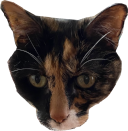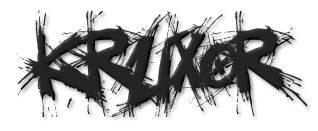additive-symbols
Quick Summary for additive-symbols (@counter-style)
additive-symbols descriptor lets you specify symbols when the value of a counter system descriptor is additive. The additive-symbols descriptor defines additive tuples, each of which is a pair containing a symbol and a non-negative integer weight. The additive system is used to construct sign-value numbering systems such as Roman numerals.
Code Usage for additive-symbols (@counter-style)
additive-symbols: 3 "0"; additive-symbols: 3 "0", 2 "\2E\20"; additive-symbols: 3 "0", 2 url(symbol.png); More Details for additive-symbols (@counter-style)
additive-symbols
The additive-symbols descriptor lets you specify symbols when the value of a counter system descriptor is additive. The additive-symbols descriptor defines additive tuples, each of which is a pair containing a symbol and a non-negative integer weight. The additive system is used to construct sign-value numbering systems such as Roman numerals.
Syntax
additive-symbols: 3 "0"; additive-symbols: 3 "0", 2 "\2E\20"; additive-symbols: 3 "0", 2 url(symbol.png); When the system descriptor is cyclic, numeric, alphabetic, symbolic, or fixed, use the symbols descriptor instead of additive-symbols.
Formal definition
| Related at-rule | @counter-style |
|---|---|
| Initial value | n/a (required) |
| Computed value | as specified |
Formal syntax
[ <integer> && <symbol> ]#where
<symbol> = <string> | <image> | <custom-ident>where
<image> = <url> | <image()> | <image-set()> | <element()> | <paint()> | <cross-fade()> | <gradient>where
<image()> = image( <image-tags>? [ <image-src>? , <color>? ]! )<image-set()> = image-set( <image-set-option># )<element()> = element( <id-selector> )<paint()> = paint( <ident>, <declaration-value>? )<cross-fade()> = cross-fade( <cf-mixing-image> , <cf-final-image>? )<gradient> = <linear-gradient()> | <repeating-linear-gradient()> | <radial-gradient()> | <repeating-radial-gradient()> | <conic-gradient()>where
<image-tags> = ltr | rtl<image-src> = <url> | <string><color> = <rgb()> | <rgba()> | <hsl()> | <hsla()> | <hwb()> | <hex-color> | <named-color> | currentcolor | <deprecated-system-color><image-set-option> = [ <image> | <string> ] [ <resolution> || type(<string>) ]<id-selector> = <hash-token><cf-mixing-image> = <percentage>? && <image><cf-final-image> = <image> | <color><linear-gradient()> = linear-gradient( [ <angle> | to <side-or-corner> ]? , <color-stop-list> )<repeating-linear-gradient()> = repeating-linear-gradient( [ <angle> | to <side-or-corner> ]? , <color-stop-list> )<radial-gradient()> = radial-gradient( [ <ending-shape> || <size> ]? [ at <position> ]? , <color-stop-list> )<repeating-radial-gradient()> = repeating-radial-gradient( [ <ending-shape> || <size> ]? [ at <position> ]? , <color-stop-list> )<conic-gradient()> = conic-gradient( [ from <angle> ]? [ at <position> ]?, <angular-color-stop-list> )where
<rgb()> = rgb( <percentage>{3} [ / <alpha-value> ]? ) | rgb( <number>{3} [ / <alpha-value> ]? ) | rgb( <percentage>#{3} , <alpha-value>? ) | rgb( <number>#{3} , <alpha-value>? )<rgba()> = rgba( <percentage>{3} [ / <alpha-value> ]? ) | rgba( <number>{3} [ / <alpha-value> ]? ) | rgba( <percentage>#{3} , <alpha-value>? ) | rgba( <number>#{3} , <alpha-value>? )<hsl()> = hsl( <hue> <percentage> <percentage> [ / <alpha-value> ]? ) | hsl( <hue>, <percentage>, <percentage>, <alpha-value>? )<hsla()> = hsla( <hue> <percentage> <percentage> [ / <alpha-value> ]? ) | hsla( <hue>, <percentage>, <percentage>, <alpha-value>? )<hwb()> = hwb( [<hue> | none] [<percentage> | none] [<percentage> | none] [ / [<alpha-value> | none] ]? )<side-or-corner> = [ left | right ] || [ top | bottom ]<color-stop-list> = [ <linear-color-stop> [, <linear-color-hint>]? ]# , <linear-color-stop><ending-shape> = circle | ellipse<size> = closest-side | farthest-side | closest-corner | farthest-corner | <length> | <length-percentage>{2}<position> = [ [ left | center | right ] || [ top | center | bottom ] | [ left | center | right | <length-percentage> ] [ top | center | bottom | <length-percentage> ]? | [ [ left | right ] <length-percentage> ] && [ [ top | bottom ] <length-percentage> ] ]<angular-color-stop-list> = [ <angular-color-stop> [, <angular-color-hint>]? ]# , <angular-color-stop>where
<alpha-value> = <number> | <percentage><hue> = <number> | <angle><linear-color-stop> = <color> <color-stop-length>?<linear-color-hint> = <length-percentage><length-percentage> = <length> | <percentage><angular-color-stop> = <color> && <color-stop-angle>?<angular-color-hint> = <angle-percentage>where
<color-stop-length> = <length-percentage>{1,2}<color-stop-angle> = <angle-percentage>{1,2}<angle-percentage> = <angle> | <percentage>
Examples
Specifying additive symbols
HTML<ul class="list"> <li>One</li> <li>Two</li> <li>Three</li> <li>Four</li> <li>Five</li> </ul> @counter-style additive-symbols-example { system: additive; additive-symbols: V 5, IV 4, I 1; } .list { list-style: additive-symbols-example; } Specifications
| Specification |
|---|
| CSS Counter Styles Level 3 # counter-style-symbols |
See also
list-style, list-style-image, list-style-position The symbols(), functional notation is used for creating anonymous counter styles. Select your preferred language English (US)EspañolFrançais日本語Русский中文 (简体) Change language

